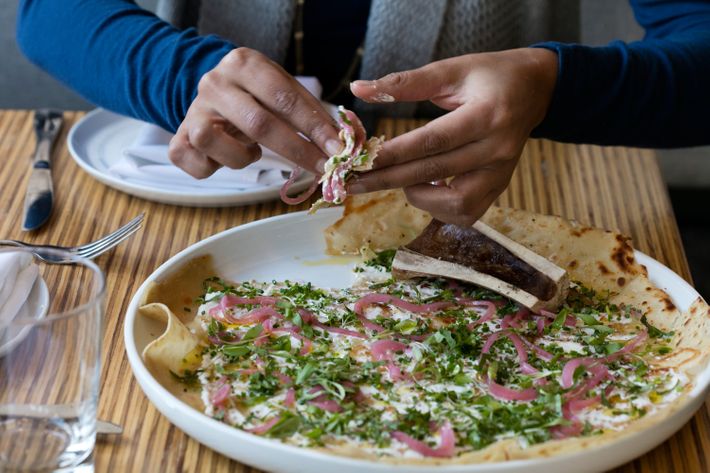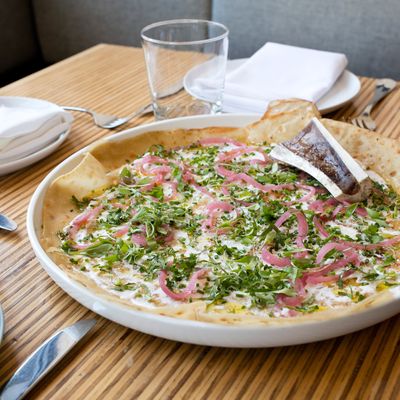
Alta Calidad — a sunny corner dining room in Prospect Heights — is billed as “innovative Mexican,” though that description doesn’t tell the restaurant’s entire story. Instead, it’s best to look at the restaurant’s “roti,” which itself is a bit misnamed. A classic Indian roti is just wheat flour, water, and maybe a dab of oil, rolled paper-thin and cooked quickly over fire until both sides are blistered. The roti that chef Akhtar Nawab serves, though, is significantly more involved: It’s a massive burrata-onion-and-marrow-topped creation that combines Mexican and Indian flavors with techniques pulled from European pastry tradition.
For chef Nawab, who grew up in Kentucky, rotis were a staple of his mother’s home cooking. But when he started cooking professionally in New York, Nawab initially shied away from Indian flavors, choosing instead to work at restaurants like Gramercy Tavern and Craft, under chefs like Tom Colicchio and Marco Canora. Eventually, though, he stepped out on his own, cooking more spice-laden cuisine, first at the now-closed Elettaria, then at the taco-centric La Esquina, and finally at Choza Taqueria, a fast-casual spot where he’s still a partner. But it’s at Alta Calidad, which opened earlier this year, where Nawab puts his Indian background front and center (even though, again, it’s ostensibly a Mexican restaurant). When he decided to make a version of his mom’s roti, he explains, “I wanted to take the roti a few extra steps, to give it more texture, and to make it feel more luxurious.”
It took Nawab 20 tries to perfect his roti dough, which he makes with crema, a staple in Mexican cooking. “It kept disintegrating too quickly because we couldn’t get the proportions correct,” he says. The crema is not a gimmick; Nawab first learned about this type of dough when he worked for chef Loretta Keller, who used a crème-fraîche base to make pastries at the now-shuttered Bisou in San Francisco. “It has not just richness, but tanginess,” he says. “The sour flavor is muddled, but it lingers for a while.” Also, by putting the fat directly into the dough itself, like a focaccia, “when you rip the roti, it’s nice and spongy.”
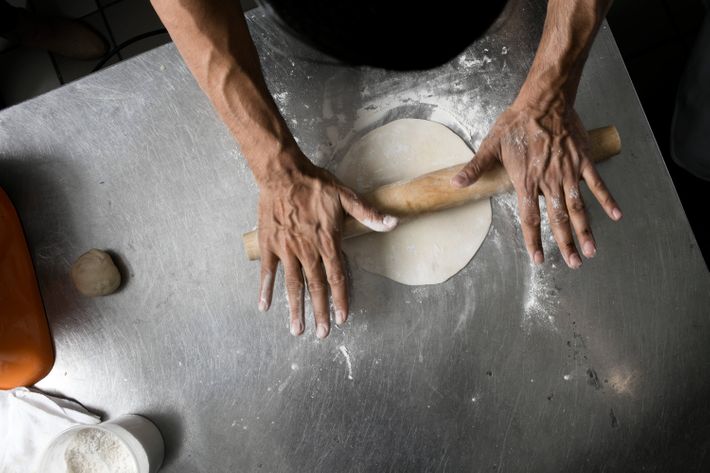
After the dough gets refrigerated for at least a day, Nawab rolls it out into a large, thin circle, rotating and flipping it several times to ensure uniform thickness. Then, he cuts the roti into long strips, rolls the strips together, folds the dough into a spiral, and rolls it out again. This technique comes from his mom, who would use it for making the small, yeasted breads known as kulchas. It’s what gives the final roti its flaky, textured layers — similar to the effect of phyllo dough.
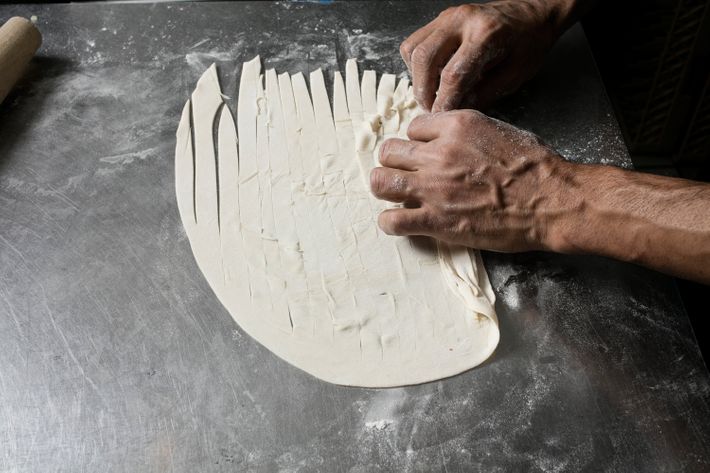
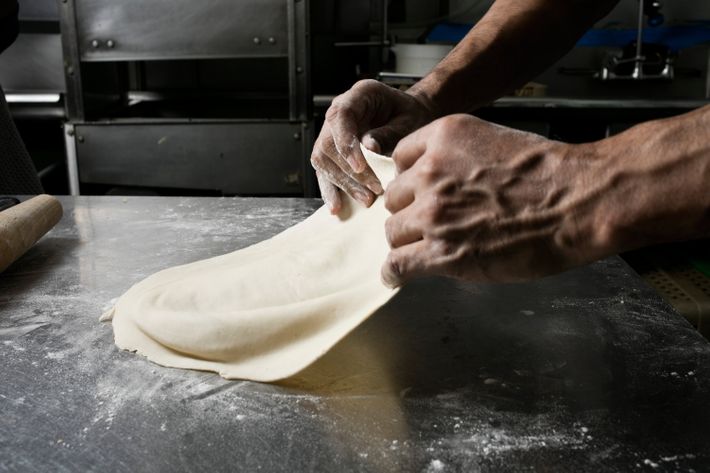
The large, slender dough round is then stored between two pieces of oiled parchment (the oil prevents the dough from becoming brittle) and chilled overnight. When that’s done, Nawab upturns the parchment onto the plancha, peels off the paper, and cooks each side for about 30 seconds, until the roti turns a glistening golden with dozens of small, dark-brown bubbles.
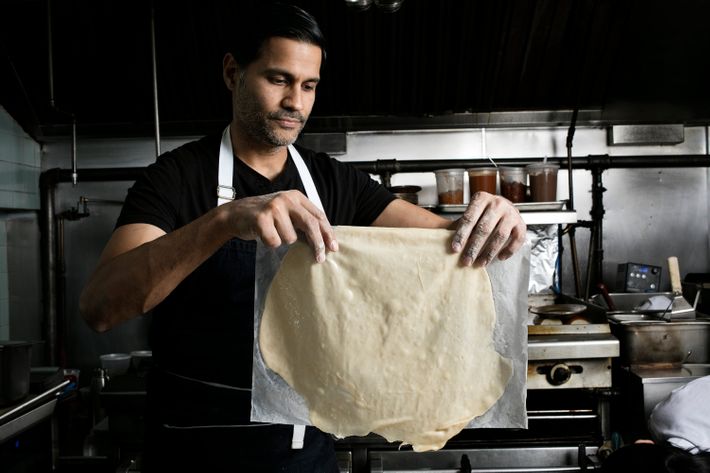
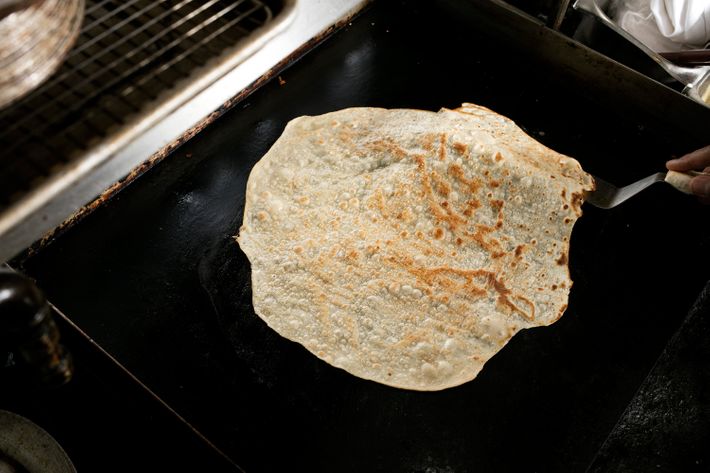
Once the roti is cooked, it’s time for toppings. First is burrata that’s blended until it’s spreadable, which Nawab says provides richness with every bite. Then it’s onions pickled in habanero, citrus, red-wine vinegar, and sugar; chives (“for that raw-onion flavor typical of Mexican food,” Nawab says); and baby cilantro with tender coriander seeds still attached. The final step is also the kitchen’s coup de grâce: a hunk of bone marrow that’s grilled on the plancha until the top is crisp. It’s placed in the center of the roti for dipping.
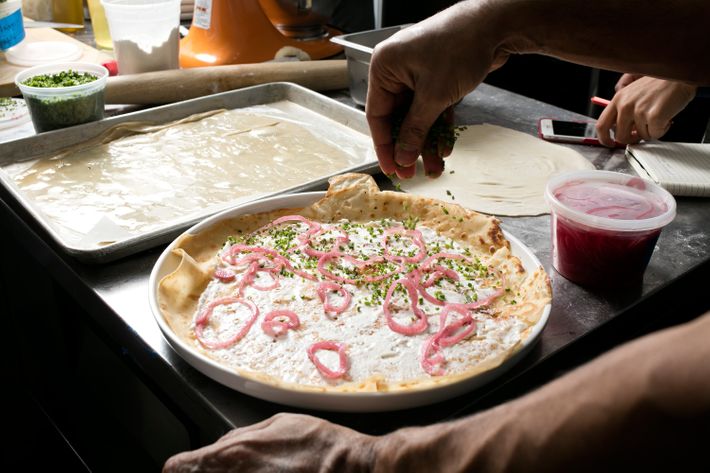
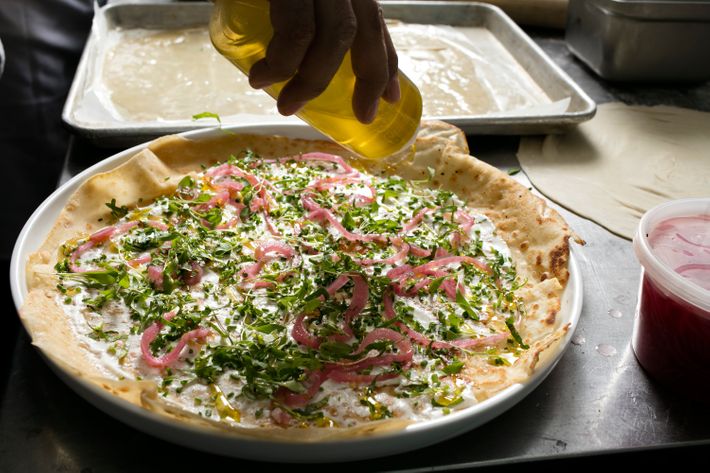
The roti arrives on your table like a massive pizza, served with a side of sweetish-sour guajillo salsa. This is not the kind of dish you eat delicately or neatly. You rip it apart with your hands and devour it, a mixture of fat, sour, spice, and the bitter brightness of the herbs. It has the technical elegance of a croissant, and the vibrancy of a taco or a plate of chaat.
A word of advice: If you want to try it, go early. Nawab says he can only make 12 each night, and they sell out. He also experiments with other toppings, like pickled tongue and different types of herbs. That’s the beauty, he says, of a dish that pulls inspiration from so many different spots: “You can riff on literally anything.”
